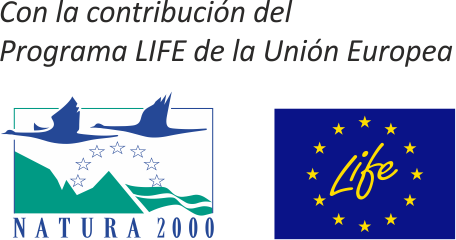One of the principle threats facing lesser kestrels, and a conservation challenge for populations in the long term, is the alteration or loss of breeding sites in urban areas. The decline shown in breeding pairs in urban SPAs is attributable, at least in part, to inappropriate restoration work. Therefore, planning of such work or maintenance of buildings which host lesser kestrel colonies is key, as is the inclusion of measures for the species in such work.
One of the fundamental objectives of the management of the 19 urban SPAs declared in Extremadura is the compatibility of the presence of breeding pairs of lesser kestrel with activities undertaken on their breeding sites.
In this sense, it is necessary to guarantee that the criteria applied in the specific conservation actions included in the project (Actions C1 and C2), as well as the frameworks and protocols obtained in the project, are incorporated within the urban norms of the municipalities in which there are SPAs declared in their urban areas.
The overall Plan for the Natura 2000 network in Extremadura (Decree 110/2015, of 19th May, which regulates the ecological network Natura 2000 in Extremadura) includes in its directives that account must be made of the species with whatever building work on structures with lesser kestrel nests, as well as the following mandatory regulation “the municipalities in which urban SPAs for lesser kestrels were declared and those with important populations of the species, should include in their urban planning technical measures for the conservation of this raptor, as well as measures considered in this document. This inclusion can be made ex oficio and in any case when any partial or total modification of the planning instruments are made”.
The places with declared urban SPAs, and therefore the objective of this action, are the municipalities of Belvis de Monroy, Brozas, Garrovillas, Cáceres, Plasencia, Saucedilla, Trujillo and Jaraíz de la Vera, in the province of Cáceres. In Badajoz province, the places that are included in this action are Acedera, Alburquerque, Almendralejo, Fuente de Cantos, Guareña, Jerez de Los Caballeros, Llerena, Ribera del Fresno, San Vicente de Alcántara and Zafra.
The General Plan for Urban Planning is the general planning instrument defined in the urban norms in Spain as the basic instrument of integrated planning for the territory and, since 1997, the competencies for this are exclusively held by the autonomous communities.
In Extremadura, it is the Law 15/2001 of 14th December on the Land and Territorial Planning in Extremadura (modified by the Law 10/2015, of 8th April) that develops the competencies in this area. In its Article 178 about integration of the urban framework and activities subject to environmental impact studies, integrated or unified environmental authorisation or other types of required environmental authorisation, it establishes that “the urban licence shall imply the granting of the remaining municipal licences or authorisations, integrating the procedure provided for them in the procedure of granting the urban licence”.
For this, an architect will visit all the town halls to confirm that in the procedures for issuing of building licences there is included the mandatory Natura 2000 Impact Report. In those cases where the General Plan has already been produced, the technical frameworks and their compliance will be revised, as well as advising the town halls with respect to any doubts arising. Most effort will be made to those municipalities where it is necessary to undertake a modification of the General Plan. In those cases, the current urban norms will be studied in detail and the best way forward to include the frameworks for lesser kestrel conservation and the preservation of nesting sites will be determined. Once the necessary documentation is elaborated, the processing of the modification files will begin, with follow-up from the architect and the technician in the General Directorate of the Environment who is assigned to this project.
At the end of this action, all of the municipalities with urban SPAs will have included in their urban norms the necessary frameworks to ensure the preservation of nesting sites in those municipalities and will incorporate the specific measures adjusted to their needs. In addition, they should have stipulated the proceedings for the preparation for the building licenses for those buildings included in the Inventory of Buildings of Interest for the Conservation of the Lesser Kestrel (in agreement with the Annex V of the Decree 110/2015, on the management plans for special conservation zones and the areas of special conservation for birds, specifically the areas of the Natura 2000 network declared in urban areas because of lesser kestrels), as well as the proceedings for the periodic updating of this inventory on the basis of new information received in the censuses of breeding pairs.
With this action, minimisation of the risk of inappropriate building work will be achieved, which has, out of ignorance, caused the loss of breeding sites for the species in the past.
Responsible for implementation: General Directorate of the Environment

